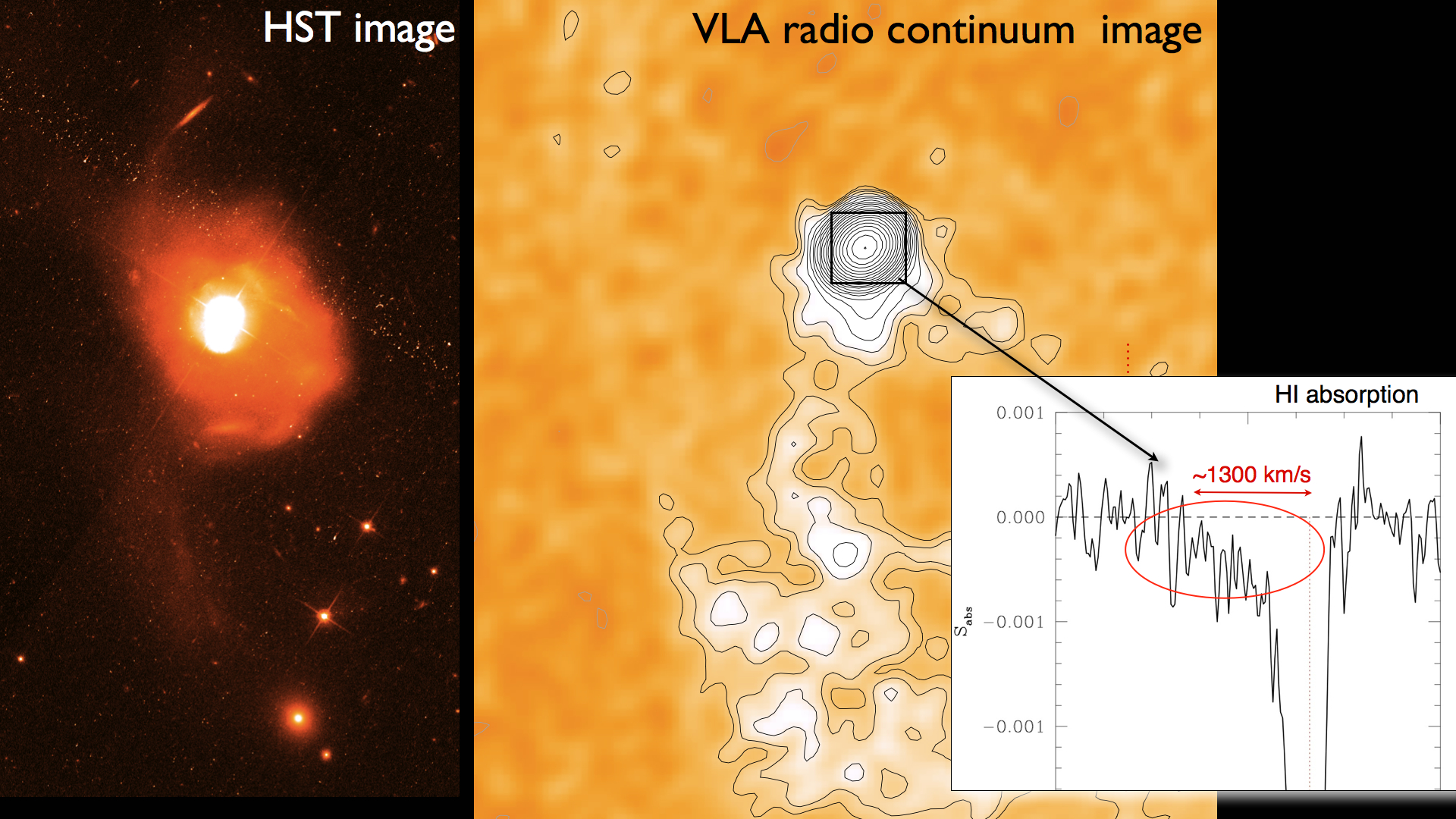Daily Image
18-07-2016Another piece of the puzzle: the fast HI outflow in Mrk 231
| Submitter: | Raffaella Morganti & Tom Oosterloo |
| Description: | In the RadioLife ERC project we study the life cycle of AGN. This life cycle is regulated by the balance between how much, and how, matter a galaxy accretes and how much and how it expels. Gas which falls in makes the central massive black hole grow and it provides the fuel that makes this black hole emit enormous amounts of matter and energy (i.e. it is called active). In turn, the matter and energy expelled this way has the opposite effect; it stops the growth of the black hole and inhibits star formation. Both effects are very important for the evolution of the galaxy. Different mechanisms can produce these outflows of mass and energy. One possibility is that they are driven by narrow plasma jets being shot into space by the black hole. An alternative is that the general environment of the black hole causes a wide wind out of the galaxy. We have used the HI 21-cm line of atomic hydrogen to observe fast outflows in absorption to study them in a number of objects to see where and how the gas is pushed out. In many radio galaxies, it is the fast radio jet coming from the black hole that pushes out the gas. However, it now turns out that not in every radio galaxy this is the case! This time we pointed the WSRT and the VLA to the ultra-luminous infrared galaxy, Mrk 231, a galaxy still in the process of settling down after a major collision with another galaxy, as can be seen from the Hubble Space Telescope image on the left. Although in this object we do not see, at the resolution of the VLA (about 1", middle image), a kpc-scale jet, we did detect a fast HI outflow. This outflow is seen as shallow HI absorption blue-shifted 1300 km/s with respect to the systemic velocity of the host galaxy. It was first discovered with the WSRT and later confirmed at higher spatial resolution by the VLA observation. Our results suggest that in this object the HI outflow is a wide-angle wind, driven by the environment of the black hole and not by a radio jet. This is interesting because it indicates that an HI component can be present in fast outflows regardless of the acceleration mechanism (wind vs jet driven) and that it must be connected with common properties of the pre-interaction gas involved. This opens opportunities to identify many more of these systems with Apertif. This result is presented in a paper accepted by Astronomy & Astrophysics: "Another piece of the puzzle: the fast HI outflow in Mrk231" by Raffaella Morganti, Sylvain Veilleux, Tom Oosterloo, Stacy Teng and David Rupke. http://arxiv.org/abs/1606.01640 |
| Copyright: | Astron |
| Tweet |  |
